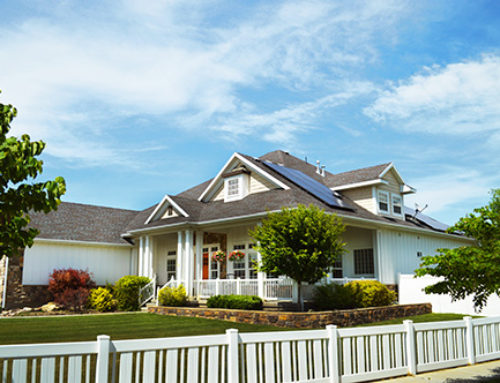The Life of a Solar Panel
Solar panels, on average, have been shown to provide a long-lasting investment. But how long do solar panels last?
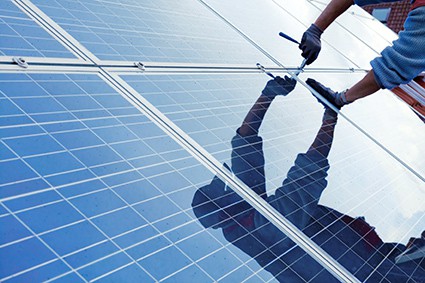
A home solar system provides various cost savings, including a lower tax bill and lower energy costs compared to fossil fuels, so long as the solar module is properly installed and cared for.
How long do they last, and are there any steps you can take to help prolong your system? It’s important to consider your solar panel lifespan when seeking alternate energy production. Here are some things to consider when researching how long solar panels last.
What is the Life Expectancy of Solar Panels?
Solar panels are built and tested to last for years.
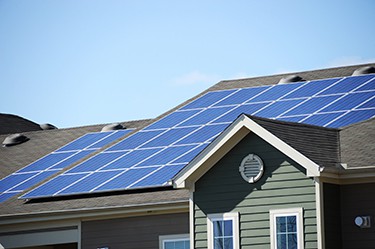
In fact, a study published in the Progress in Photovoltaics: Research and Applications library showed that a well-planned solar panel system could last well past its warranty date, which allows it to more than pay for itself in the long run.
Their durable exteriors are built to withstand intense snow, hail, and winds, and they don’t incorporate mobile components, except for the panels that use pole or ground mounts, which means they are also low maintenance. In fact, on average, property owners can expect their solar panel’s lifespan to be up to 25 years or more. Modern solar panels usually include a 25-year product warranty as a special guarantee from the solar company, meaning they’ll take the blame for any efficiency loss before then.
However, several factors determine a solar panel’s lifespan, including the installation, the solar panel type, and how well the panels are manufactured.
Thin-film solar panels, also known as amorphous panels, tend to have the shortest life span as compared to other types of panels, with an expected maximum power output of 10 years. On the other hand, polycrystalline and monocrystalline solar panels are made of silicon, which has higher heat conduction than mono-celled PV modules. They have been shown to last more than 25 years.
What Makes Solar Panels Go Bad?
Besides the most obvious reason that some panels fail, they are simply not built with quality.
This can cause them to lose their efficiency sooner. Another issue that can cause your panels to go bad is the microwires inside a cell. They can erode or malfunction, causing a short or a hot spot within the panel.
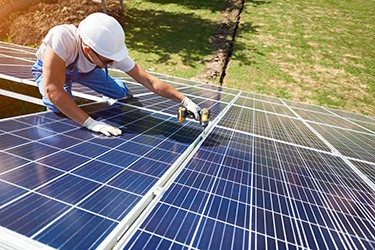
Solar panels contain a protective film, the PV Module Encapsulation, to safeguard its vital parts; however, sometimes this film can become damaged, which can cause your solar panels to go bad. When the encapsulation film becomes damaged, it can allow water to enter the inside of the panel and destroy the parts and cause the panel to stop working.
Furthermore, solar technology is subject to a degradation rate, which means it will naturally decrease in solar power output over time, depending on the type of module, the climate, and the racking system.
The degradation rate often depends on the brand, with some brands providing as little as 0.3% degradation annually. In comparison, other brands have been shown to provide much higher degradation rates of about 0.8% or more per year. However, according to the National Renewable Energy Laboratory (NREL), at the end of 25 years, most solar panel users can expect a yearly degradation rate of about 0.5%, or about an 88% working capacity, on average.
How Can I Make My Solar Panels Last?
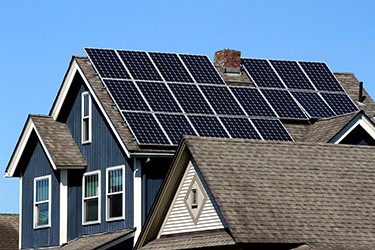
Taking good care of your solar array, which includes your solar panels, modules, and cells, is the best way to extend your system’s life and ensure you continue to receive the various benefits of renewable energy.
Whether you have polycrystalline, monocrystalline, thin-film solar panels, or concentrated PV modules, the following tips can help you maintain your system for maximum lifespan.
- Tip #1: Keep the Tiles Clean. Build-up can increase your desegregation rate, which can shorten the lifespan of your panels. Therefore, keep debris such as snow, dirt, leaves, fallen twigs, and bird excrement cleaned off your tiles.
Regular maintenance will enable them to maximize sun exposure and produce the greatest amount of solar energy possible, which will decrease your annual solar panel degradation rate.
You can also invest in specialty products to decrease the risk of physical damage to your panels. These products include critter guards, which deter birds and other animals from making their home beneath your panels. Nests damage your panel and wires over time.
Your installer can also position the panels in an area free of trees, which will help prevent the branches from blocking sunlight to the panel and twigs from falling on the tiles.
- Tip #2: Take Care of the Batteries. Provided you have a high-grade battery, it can last between 5 to 15 years, especially off-grid deep cycle batteries, and most come with a 3 to 10-year warranty. However, you still must take care of it properly to ensure its maximum lifespan; otherwise, it can go bad within the first 12 months of use.
For instance, lead acid batteries need to be recharged after they are used, or they can become damaged, especially if you allow them to sit too long before recharging them. Batteries are one of the highest costs associated with solar renewable energy systems; therefore, it is important to maintain them and have them inspected regularly to keep your costs low.
Furthermore, if the battery is improperly installed, it can also decrease its lifespan, as can an ill-matched system that doesn’t account for its capacity. Therefore, the first step to maintaining the battery is to ensure it is the right fit for your system and installed properly, which can help prolong its life.
- Tip #3: Have Your Panels Inspected. Regularly having your solar array (including your PV modules, silicon panels, and cells) inspected and maintained by the manufacturer or installer can help keep your system working its best.
Regular maintenance can reveal potential issues with your system, such as unprotected wires and other issues, which can be addressed before becoming bigger problems later. The inspection will also include evaluating the roof racking system to help ensure the panels remain securely affixed to the roof, so they don’t come loose and fall off. The inspector will also assess the solar inverter, which typically only lasts from 10 to 15 years; therefore, you can plan on replacing it way before the solar panel itself requires replacement.
Have it regularly inspected and replaced at about the 10 to 15-year mark, during which time you can switch to a more advanced micro-inverter, which is designed to last up to 25 years like the solar panel itself. Many manufacturers also allow you to upgrade to a 20 to 25-year warranty, which means if the inverter fails within 10 to 15 years, you have the flexible option to replace it with a newer model.
Ultimately, solar panels last a long time, which offers substantial savings over traditional energy sources that use fossil fuels. Since they have a lifespan of at least 20 years, it is highly unlikely they will need to be replaced before the end of the warranty.
However, you will need to account for a loss of efficiency over time, which can lower your energy output. If your energy output decreases, it is possible to add more power to your system, provided the new components are compatible with the existing components.
